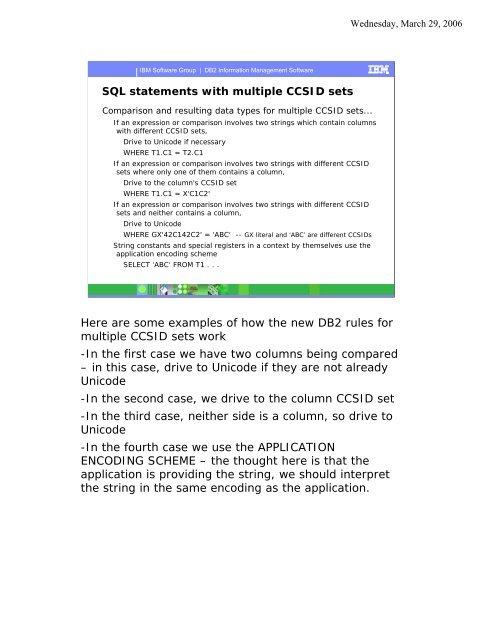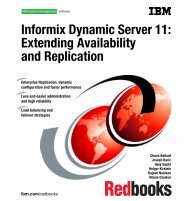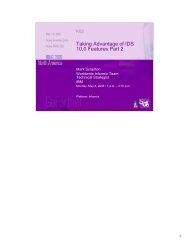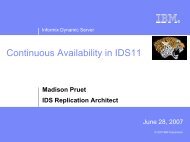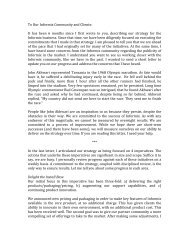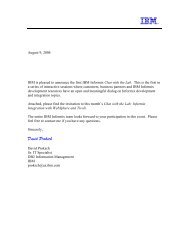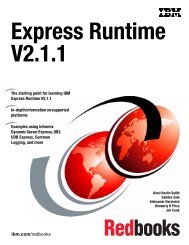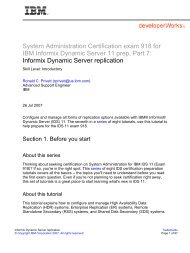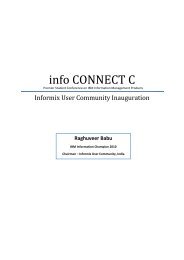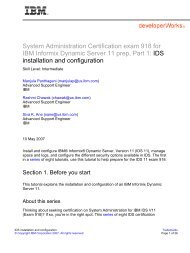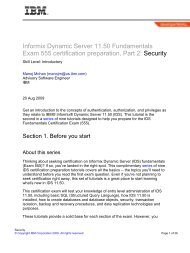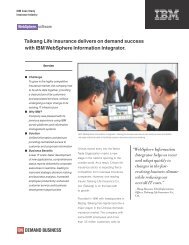CCSID 102 â What's a CCSID and why do I care?
CCSID 102 â What's a CCSID and why do I care?
CCSID 102 â What's a CCSID and why do I care?
Create successful ePaper yourself
Turn your PDF publications into a flip-book with our unique Google optimized e-Paper software.
Wednesday, March 29, 2006<br />
IBM Software Group | DB2 Information Management Software<br />
SQL statements with multiple <strong>CCSID</strong> sets<br />
Comparison <strong>and</strong> resulting data types for multiple <strong>CCSID</strong> sets...<br />
If an expression or comparison involves two strings which contain columns<br />
with different <strong>CCSID</strong> sets,<br />
Drive to Unicode if necessary<br />
WHERE T1.C1 = T2.C1<br />
If an expression or comparison involves two strings with different <strong>CCSID</strong><br />
sets where only one of them contains a column,<br />
Drive to the column's <strong>CCSID</strong> set<br />
WHERE T1.C1 = X'C1C2'<br />
If an expression or comparison involves two strings with different <strong>CCSID</strong><br />
sets <strong>and</strong> neither contains a column,<br />
Drive to Unicode<br />
WHERE GX'42C142C2' = ‘ABC‘ -- GX literal <strong>and</strong> ‘ABC’ are different <strong>CCSID</strong>s<br />
String constants <strong>and</strong> special registers in a context by themselves use the<br />
application encoding scheme<br />
SELECT ‘ABC‘ FROM T1 . . .<br />
Here are some examples of how the new DB2 rules for<br />
multiple <strong>CCSID</strong> sets work<br />
-In the first case we have two columns being compared<br />
– in this case, drive to Unicode if they are not already<br />
Unicode<br />
-In the second case, we drive to the column <strong>CCSID</strong> set<br />
-In the third case, neither side is a column, so drive to<br />
Unicode<br />
-In the fourth case we use the APPLICATION<br />
ENCODING SCHEME – the thought here is that the<br />
application is providing the string, we should interpret<br />
the string in the same encoding as the application.


